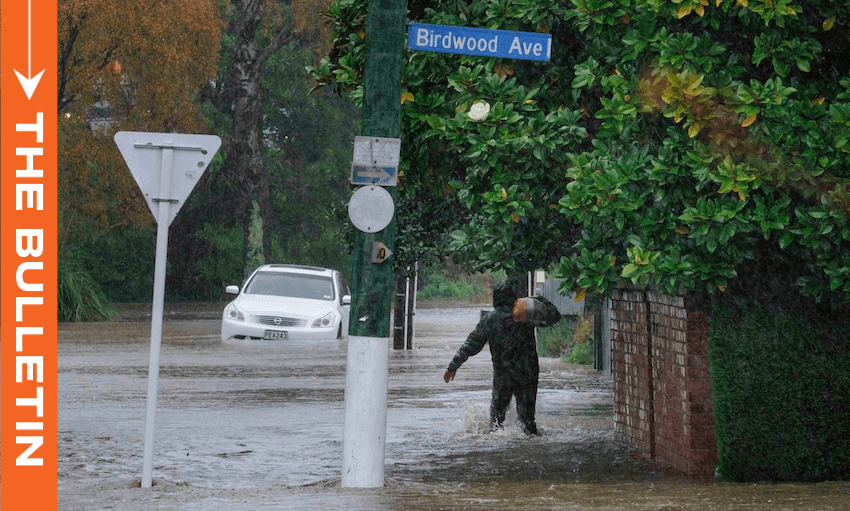A rare red wind warning, states of emergency and multiple evacuations marked the year’s most severe weather event so far, writes Catherine McGregor in today’s extract from The Bulletin.
To receive The Bulletin in full each weekday, sign up here.
Wellington hit by record winds
Large parts of the country are in recovery mode today after 36 hours of wild weather brought floods, evacuations, and widespread disruption. Hundreds of homes remain without power in the Wellington region, including in Wellington city, the Hutt Valley and Wairarapa. Flights have resumed at Wellington Airport, though some flights have been cancelled or postponed, RNZ reports.
Amid a rare red wind warning, gusts yesterday reached 150kmh in exposed areas of the capital, waves topped 11.5 metres in the harbour, and swells closed coastal roads including Moa Point near the airport and Marine Drive in Eastbourne. Public transport was hit hard, with dozens of bus cancellations, Ngauranga Station shut for the day, and the Wairarapa rail line suspended, Stuff’s Sanda Arambepola reported.
Air New Zealand and Jetstar grounded all flights in and out of Wellington for much of the day, and Cook Strait ferries were also cancelled, with services not expected to resume until Friday afternoon. Council facilities across the city closed early, as did Victoria University, while around 2,000 homes lost power, mainly in the Hutt Valley.
States of emergency and mass evacuations in Canterbury
Further south, they’re surveying the damage after one of Christchurch’s wettest days since records began, The Press reports. Christchurch and Banks Peninsula are still under a state of emergency, with the peninsula essentially cut off by floodwaters. In Selwyn District, just south of the city, a separate emergency declaration is also in place. Leeston, Doyleston and Southbridge were among the worst-hit areas yesterday, while parts of Selwyn Huts were evacuated after the river broke the stopbanks.
The fire service responded to at least 80 callouts, including to a woman and two children trapped in a car on a partially submerged bridge yesterday morning.
Selwyn Huts face both immediate danger and long-term retreat
For residents of the Selwyn Huts, Thursday’s storm was both a crisis and a grim portent. The tight-knit lakeside community, built on Crown land by Te Waihora/Lake Ellesmere, last year successfully overturned a council decision that it must fully vacate by 2039 due to increasing climate risk and a wastewater system that was no longer fit-for-purpose.
On Thursday, dozens of homes were evacuated in the Upper Selwyn Huts area, which is located where the Selwyn River empties into Lake Ellesmere. “It’s as bad as I’ve ever seen it,” hut owner Keith Morrison told RNZ. With climate change a growing issue for the settlement, “this is just another prompt”, said Morrison. “It might actually help the community to realise it’s real because a lot of people are still in denial about it.”
A future of floods, drought and climate retreat for Canterbury
Thursday’s deluge may also be a glimpse into the future of Canterbury as a whole. Projections suggest Christchurch could experience sea level rise of up to 80cm by 2100, triggering more frequent storm surges, river floods and a retreat from many eastern suburbs.
In Newsroom, science writer Jane Shearer looks at how the region could change by the late 21st century. While Christchurch and Banks Peninsula will be significantly drier in summer, the inland Canterbury Plains and foothills can expect a lot more rain in winter, as strong north-westerly systems push over the mountains. Meanwhile “population expansion will result from climate migrants from throughout New Zealand, given our entire coastline will gradually flood – people will want to live inland”.
“As much as Christchurch will alter as climate changes, it will remain a lucky place,” writes Shearer, “because it will still have liveable temperatures, flat land on which to build housing, fertile hinterland on which to grow food, rivers bringing water from mountains where rain still falls regularly, and sources of renewable energy generation.”

